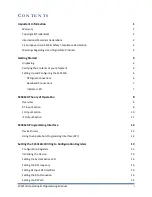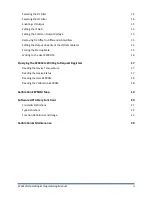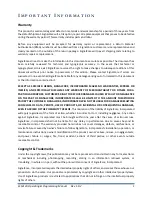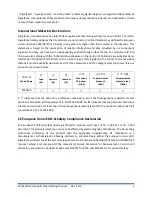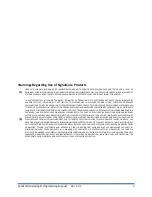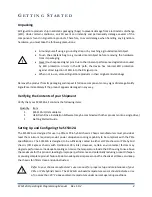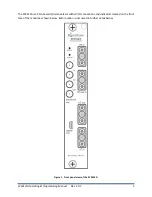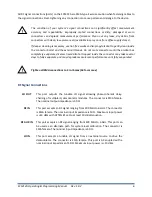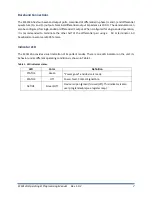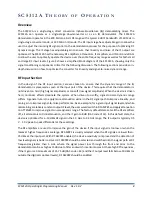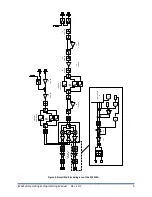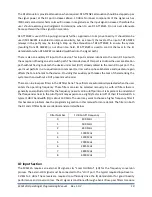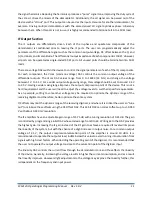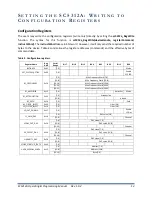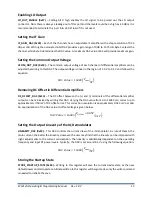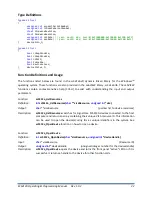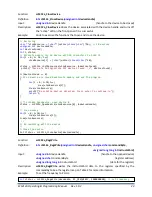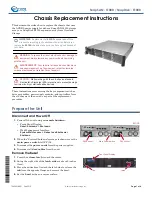
SC5312A Operating & Programming Manual
Rev 1.0.2
8
S C 5 3 1 2 A
T
H E O R Y O F
O
P E R A T I O N
Overview
The SC5312A is a single-stage, direct conversion Inphase-Quadrature (IQ) demodulating mixer. The
SC5312A can operate as a single-stage downconverter or as an IQ demodulator. The SC5312A
demodulator operates in the 400 MHz to 6 GHz RF range with a typical 3 dB IF bandwidth of 160 MHz in
single-stage converter mode, or 320 MHz in IQ mode. The RF input stage has adjustable gain to allow the
user to adjust the incoming RF signal prior to the demodulation process for the purpose of optimizing RF
dynamic range. The IF stage has adjustable gain to ensure that linearity and noise of the IF output are
optimized. The SC5312A has the necessary RF amplifiers, attenuators, IF amplifiers, and IF control via DACs
to allow the user to optimally operate the device over the entire frequency range as well as for both small
and large RF input levels. Figure 2 shows a simplified block diagram of the SC5312A, showing only the
signal conditioning components critical for the following discussion. The following sections provide an in-
depth discussion on how to optimize the converter for linearity and signal-to-noise dynamic range.
RF Input Section
In the design of the RF input section, care was taken to ensure that the dynamic range of the IQ
demodulator is preserved as seen at the input port of the device. This requires that the demodulator is
not driven too hard (high signal amplitude) or too soft (low signal amplitude). When the device is driven
hard, nonlinear effects dominate the system. When driven too softly, signal-to-noise dynamic range
suffers. A general rule is to apply more attenuation earlier in the RF signal path to improve linearity, and
more gain to improve signal-to-noise performance. As an example, for a given input signal level and while
maintaining a relatively constant output IF level, the user would switch in RF AMP#1 and apply attenuation
on ATTEN#3 to improve signal-to-noise dynamic range. The factory default state sets all the RF amplifiers
off, all attenuators to 0 dB attenuation, and the IF gain to 8 dB (DAC code of 32). In this default state, the
device is optimized for a -10 dBm RF signal in the 1.0 GHz to 2.4 GHz range. The IF output is typically 0.5
V - 1.0 V peak-to-peak differential at these settings.
The RF amplifiers are used to improve the gain of the device if the input signal is too low or when the
losses at higher frequencies are large. RF AMP#1 is usually selected when the RF signals are lower than -
25 dBm at the input port. With RF AMP#1 enabled, the device sensitivity is improved and the detection of
low level signals is better resolved. RF AMP#2 should be selected and switched into the signal path at RF
frequencies greater than 5 GHz, where the signal power loss through the front end prior to the
demodulator can be as high as 15 dB due to filter and switch insertion losses. At these high RF frequencies,
if the IF gain is at its maximum of 15.75 dB (DAC code = 63) and the IF output level falls below -10 dBm (or
outside the digitizers optimal levels), RF AMP#2 should be enabled.


